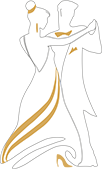
Vienna and balls
Vienna is a metropolis of contemporary balls. Around 400 balls are annually held here from the end of November until the last carnival week. Dancers from around the world, not only local ones, come to enjoy the tradition of Viennese balls, which fills the city with a unique festive flair.
A unique flair is vested in the proceedings by the ceremonial program. The foundations of the carnival-esque addiction to balls amongst the Viennese can be found as far back as the 18th century, when the wearing of masks and costumes was reserved to the nobility on private occasions. To compensate for this, Emperor Joseph II opened up the dances in the Redoute Rooms in the Hofburg Palace to everyone. This allowed the Viennese to copy the courtly customs of these celebrations, something which they have retained to this day. A strict dress code, an opening fanfare, the entrance of the debutants and the call of “Alles Walzer,” dance cards and changes of music, together with the midnight quadrille and the formal closing are all evidence of this. Another unique feature is the “Damenspende,” a special gift given to each lady.
The waltz, being a partner dance, was initially perceived as being morally objectionable. The Vienna Congress, which was held in the city in 1814/1815 in order to establish a new order in Europe following Napoleon's campaigns, however, made it socially acceptable. The political negotiations were so lavishly accompanied by balls that they gave rise to the legendary saying "Der Kongress tanzt!" ("The congress dances!"). The Congress’ dancing ultimately moved the world more than any of its decisions. The Viennese Waltz was honoured as the king of dances.
The intoxicating twists and turns at waltzing speed captivated ballroom onlookers. Johann Strauss Sr. (1804-1849), who established the supremacy of the waltz with 152 successful compositions, struck up with his orchestra an invitation to this dreamy dance from Vienna to London.
The majority of the Viennese balls are nowadays organised by professional associations. The Kaffeesieder-Ball (the Vienna Coffeehouse Owners' Ball) transforms Hofburg into the most formal dance café in the city. The Vienna Philharmonic Ball as well as the Ball of Technic and Industry, both held on the premises of the Vienna Musikverein, is considered by many to be the unofficial highlight of the ball season. Last but not least, the Opera Ball, held in the Vienna Opera House, "in the most beautiful ballroom in the world,” is simultaneously both the State Ball of Austria and a ball of the artists of the State Opera.
Thanks to the Association of Austrians in the Czech Republic, guests have a marvellous opportunity annually to experience in Prague the unique atmosphere of Viennese balls.
